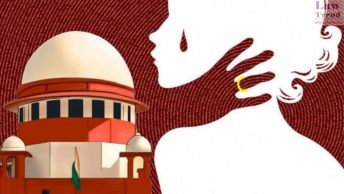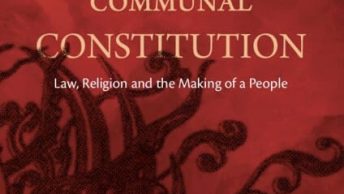[Ed Note: As part of our New Scholarship section, we have been inviting discussants to respond to the public law themed articles featured in Volume 5 the Indian Law Review. You can access the posts in this discussion here. In this post, Professor V. Krishna Ananth responds to the arguments made by Eesha Shrotriya and Shantanu Pachauri in their paper Simultaneous elections and flexible legislative terms: a constitutionally preferable approach. You can access the article here.]
Eesha Shrotriya and Shantanu Pachauri, in this article, have presented a case for simultaneous elections to the Lok Sabha and the State Legislative Assemblies; the article points to the fallacies in the proposals put forth by the NITI Aayog apart from such others by the Law Commission of India (as early as in 1999). I must say, at the outset, that the article locates the renewed interest in this matter in the BJP’s election manifesto in 2014 and the report, following the party’s ascendancy to power in the elections, of the Department-Related Parliamentary Standing Committee on Personnel, Public Grievances, Law and Justice that discussed the feasibility of such an idea. In other words, the article does make it clear that though the idea was broached for the first time by the Election Commission of India in 1982 and taken up by the Law Commission of India in 1999, the push indeed came from the BJP’s ascendancy to power in May 2014.
I must state at the outset that my own views on this are different, in a fundamental sense, with all these proposals as much with those set out in this article. In my view, despite concerns about the expenditure of public money with frequent elections, such costs are worth in the cause of democracy and the constitutional scheme premised on accountability, the people as the sovereign and federalism. Hence, I will argue that the premises from which the arguments are proposed in this article are the same as in the proposals by the NITI Aayog and the Law Commission of India earlier.
As practitioners of neo-classical economics do – letting choices be determined by a pre-determined set of axioms rather than factoring in social contexts – the authors have allowed themselves to be persuaded, without demur, that frequent elections are bad for democracy. A fixed term for the State Legislative Assemblies and the Lok Sabha as well is a pre-requisite to a healthy democracy in their view. It is their argument thereafter that the instability caused can be taken care of by way of some tinkering with the law governing elections.
Reiterating my argument that the changes proposed to ensure simultaneous elections, including that by Shrotriya and Pachauri, involve changes not merely in the election laws but also in the Constitution. The essentially knock the bottom of the construct of accountability of the Executive to the Legislature and the federal structure of the Constitution. It remains to see if such amendments stand the test of the law as laid down in the Basic Structure Doctrine enunciated in the Keshavananda verdict of April 1973. In essence, the proposals are towards centralisation of power.
It makes sense, hence, to delve very briefly into when and why did simultaneous elections to the Lok Sabha and State Legislative Assemblies get disrupted. It was in 1959-60, when the first-ever non-Congress State Government by the Communist Party of India was dismissed (even when its majority support in the State Legislative Assembly was intact) on 31 July 1959. The dismissal, indeed the first-ever instance of intolerance by the party in power in New Delhi to the essential tenets of a multi-party electoral democracy as envisaged in the Constitution, continued with impunity after 1967 when at least 10 States out of the 21 then had come under the rule of parties or combines opposed to the Congress. The Defection of MLAs was made a new normal and fall of Governments, dissolution of State Legislative Assemblies causing elections to these ahead of schedule. The same tendency was displayed by the first-ever non-Congress coalition – the Janata Party which included the Bharathiya Jan Sangh from where the BJP was born in 1980 – in 1977; dismissing the incumbent Congress-led State Governments and holding elections to the State Legislative Assemblies ahead of schedule. The Congress’ return to power at the Centre in 1980 witnessed yet another such ‘assertion’ of centralisation of power. The beast was harnessed, so to say, by the Supreme Court in March 1994 to some extent. This is not to say State Governments were rendered stable since then.
It was in this context and when it appeared that a single party rule as at the time of the first general election (in 1951-52) was back in place that the Election Commission of India spoke aloud about the desirability of simultaneous elections to the Lok Sabha and the State Legislative Assemblies. Lest we forget, the Congress party’s return to power in 1980 was marked Indira Gandhi emerging its sole leader.[1] It is no coincidence that the trumpet was blown once again after 2014. And as it was done in 1982, it was glossed with such ideals as national good, development and governance.
It is not a mere coincidence that the NITI Aayog took the lead to draft a proposal going into the nuts and bolts of implementing the idea and entrusted the task to Bibek Debroy, an economist by training; those familiar with him need not be informed about his belonging to the neo-classical school. The Constitutional scheme, the long history of how the Constitution was made and adopted in November 1949, the several decisions of the Supreme Court that went into its evolution, the historical conjunctures when simultaneous elections to the Lok Sabha and the State Assemblies were disrupted, etc. In other words, neo-classical economics does not factor in the context and its practitioners simply revel themselves in building models based on pre-set axioms to determine the course rather than specific contexts that rule the course.
It is hence, I find, the article under review, by scholars of law and jurisprudence problematic; they seemed to have fallen into the same trap that law and justice ought to detest from. In doing so and simply tweaking the proposals dished out hitherto including the one put forth by the Law Commission of India in 1999, the scholars seemed to have walked into the path that management professionals trained in the B-schools are tutored to tread.
All this is not to celebrate with glee the reality of a nation in election mode forever. It is not my case here to celebrate the culture of election-eve announcements of schemes and installation of foundation stones for bridges and roads only to be forgotten after the votes are cast. This culture, indeed, is odious and knocks the bottom of accountability. But the roots of this are not to be traced in the election laws and the Constitution and thus seek an easy way out by tinkering with them. Instead, it ought to be traced in the historical context of the distortions.
Frequent elections and a nation held under its spell and the toll it takes on expending public money is indeed a concern. But this cost is too little when compared to the price the proposed reforms would take on accountability and the foundations of federalism, two important tenets of the Constitutional scheme. Hence it ought to be shunned.
[1] The Constitution amendment adding the Tenth Schedule (anti-defection law in common parlance) in 1985, indeed, seemed a whiff of fresh air; although it was argued then as a measure by the Congress party to ensure its MPs and MLAs did not defect at will as they had been doing.
Dr. V. Krishna Ananth teaches at the Department of History, Sikkim University. His work focuses on Indian history, contemporary Indian politics, legal and constitutional issues. His publications include India since Independence: Making Sense of Indian Politics (2009), Politics in the Times of Churning (2014), The Indian Constitution and Social Revolution: Right to Property Since Independence (2015) and Between Freedom and Unfreedom: The Press in Independent India (2020). He held a fellowship at the Nehru Memorial Museum and Library, New Delhi (May 2009–April 2011), during which he researched on Retreat of the Nehruvian Socialist Project: A Study on the Political, Legislative and the Judicial Interventions. He tweets @VKrishnaAnanth.






Your point of view caught my eye and was very interesting. Thanks. I have a question for you.
Thanks for sharing. I read many of your blog posts, cool, your blog is very good. https://www.binance.com/lv/register?ref=B4EPR6J0
Your point of view caught my eye and was very interesting. Thanks. I have a question for you.